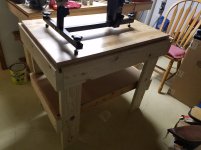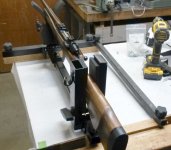Hey all, as I'm going into the final semester of my senior year of school, I am working on a project for a company that is looking to create a gun vise on a modular bench. We are looking for insight on what you folks who use these daily may look for in a vise/ bench combo. We've looked at Tipton style vises, etc. And are looking for any improvements you may be looking for in a bench/ vise setup.
Any ideas? Thanks all
Sent from my XT1254 using Tapatalk
Any ideas? Thanks all
Sent from my XT1254 using Tapatalk
Last edited:


